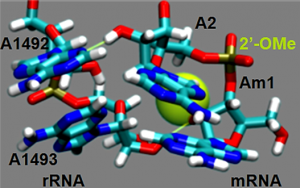RNA is a polymer composed of four major ribonucleosides, two purines, adenosine, guanosine, and two pyrimidines, cytosine and uridine. Yet, it functions in many important roles in the cell. Messenger, mRNA, provides the codes for translation to protein. Transfer RNA, tRNA, carries the individual amino acids to the ribosome and decodes the mRNA codons, and as roles of regulating translation as well as transcription. Ribosomal RNA, rRNA, is composes the superstructure of the ribosome and in its structure has the sites decoding and peptide synthesis. In addition, there are numerous other RNAs that function importantly to both prokaryotic and eukaryotic cells function.
Genomic RNA, viral RNA
MicroRNA, miRNA
Small nuclear RNA, snRNA
Small nucleolar RNA snoRNA
Long non-coding RNA, lnRNA
Guide RNA, gRNA
Enzymatic RNA, ribonuclease P
and others, including investigator-engineered RNAs.
How can RNA composed of only four nucleosides perform so many varied and important roles in the cell?
The Agris RNA Lab is dedicated to revealing the physicochemical attributes of RNA that contribute to the functioning of RNA, and are important to human health.






